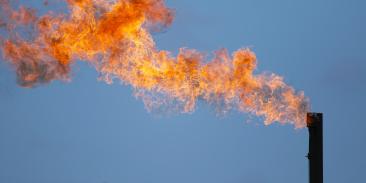EPA Rules To Cut Haze In National Parks Fall Short
The U.S. Environmental Protection Agency’s (EPA) final rule intended to cut haze pollution in national parks falls short because it allows states to exempt some high polluting industrial sources from clean up, according to Environmental Defense. Late Wednesday, June 15, the EPA finalized clean up guidelines for large power plants and industrial sources that contribute to haze air pollution in protected national parks such as Acadia, Canyonlands, Glacier, Grand Canyon, Great Smoky Mountains, Rocky Mountain, Shenandoah, Yellowstone and Yosemite. EPA’s action was required under a court-ordered settlement agreement with Environmental Defense, which was represented by Earthjustice in the case.
“Unfortunately, EPA has made it harder for states to restore clean air to our national parks by exempting some high-polluting industrial sources from clean up requirements,” said Environmental Defense senior scientist Jana Milford. “Protective state action enforcing EPA’s pollution control guidelines will now be essential to lift the veil of haze from our nation’s Crown Jewels.”
Environmental Defense disagrees with EPA allowing states to ignore the first 35 days of adverse visibility impacts over a five year period in determining whether a source should be subject to clean up requirements, dubbed “best available retrofit technology” or “BART.”
“Every day of visibility damage matters,” said Milford. “We shouldn’t have to wait 36 days to demonstrate that the source is harmful.”
Earlier this week, Environmental Defense released a new report, Clearing the Haze from Western Skies, documenting the rising pollution levels at national parks in the interior West, from Yellowstone in the north to Grand Canyon in the south. The report is available at www.environmentaldefense.org/go/westernhaze
More than a quarter century ago, as part of the 1977 Clean Air Act amendments, Congress declared as a national goal the restoration of clear vistas in premier national parks and wilderness areas. The new federal guidelines address two key issues: (1) how states determine whether sources are subject to pollution control requirements, and (2) how states determine what level of pollution control should be required for covered sources. State plans implementing the guidelines are due in December 2007, and must also demonstrate steady progress toward the overarching goal of restoring natural visibility conditions in protected areas by 2064. The EPA guidelines apply to 26 categories of industrial sources constructed between 1962 and 1977. The industrial sources include power plants, industrial boilers, smelters, refineries, chemical facilities, cement plants, and pulp and paper mills.
With more than 3 million members, Environmental Defense Fund creates transformational solutions to the most serious environmental problems. To do so, EDF links science, economics, law, and innovative private-sector partnerships to turn solutions into action. edf.org
Latest press releases
-
Trump Administration’s New Tax Credit Guidance Is “Another Senseless Attack on Clean Energy”
August 15, 2025 -
More Dire Colorado River Reservoir Forecasts Reinforce Urgent Need for Action
August 15, 2025 -
EDF, UCS Ask Court to Enjoin Trump Administration’s Brazenly Unlawful Use of Corrupt “Science” Report
August 15, 2025 -
Independent Report Finds that the Trump Administration’s Orders to Keep Coal-fired Power Plants Running Could Cost Consumers between $3-6 Billion a Year
August 14, 2025 -
EDF Strongly Opposes Trump Administration Proposals to Eliminate Protections for Air Pollution from Power Plants
August 13, 2025 -
Some Truck Makers Challenge Vital Clean Truck Partnership with California
August 12, 2025










